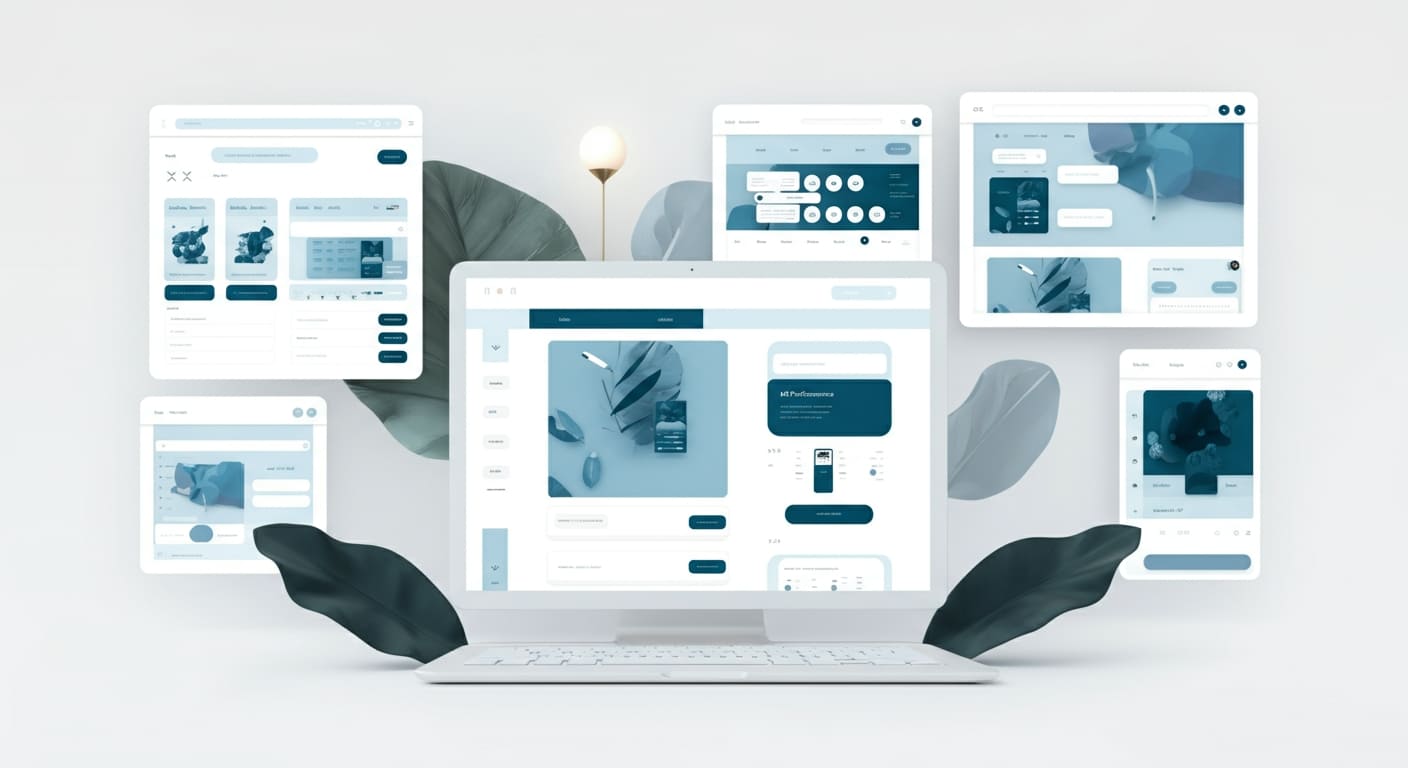Ever wonder why your website isn’t reaching everyone, despite your best efforts? If you’re a developer, tackling web accessibility might feel overwhelming—but ignoring it means losing users and risking compliance. In this post, you’ll learn key web accessibility guidelines that make your sites usable for all, from WCAG standards to ARIA labels and keyboard navigation. Let’s break down how you can create inclusive digital experiences that stand out.
Understanding WCAG: The Foundation of Web Accessibility
The backbone of any successful web accessibility initiative is the Web Content Accessibility Guidelines, or WCAG. Developed by the World Wide Web Consortium (W3C), WCAG provides a comprehensive set of recommendations designed to make digital content accessible to everyone, including people with disabilities. Whether you’re a front-end developer or a full-stack engineer, understanding WCAG helps ensure your websites are not just usable but legally compliant in many jurisdictions.
The Four WCAG Principles
At its core, WCAG is built around four foundational principles, often remembered by the acronym POUR:
- Perceivable: Information and user interface components must be presented in ways users can perceive. For example, providing text alternatives for images or ensuring sufficient color contrast.
- Operable: Users must be able to interact with interface components using various input methods. This includes clear navigation, keyboard accessibility, and avoiding time-limited interactions.
- Understandable: Both the information and the operation of the user interface must be clear and predictable, reducing complexity and avoiding confusing layouts or interfaces.
- Robust: Content must be compatible with current and future technologies, including assistive devices like screen readers.
Compliance Levels
WCAG defines three levels of compliance to guide developers on the depth of accessibility:
- Level A (Minimum): Basic web accessibility features that every site must implement, such as providing text for non-text content.
- Level AA (Recommended): Balances accessibility and usability for most sites. This level addresses issues like color contrast and keyboard navigation.
- Level AAA (Ideal): The highest level, representing the best accessibility practices. Often challenging to fully implement, it is targeted to very accessible sites such as government or educational platforms.
Why WCAG Matters for Developers
Ignoring WCAG not only excludes millions of potential visitors worldwide—including those with visual, auditory, motor, or cognitive disabilities—but also exposes your project to legal liability. For example, countries including the US (via ADA), UK, and EU have regulations that align with WCAG requirements. Practical adherence improves SEO, user engagement, and site reputation.
Actionable tip: Start by regularly auditing your site against WCAG 2.2 criteria using automated tools and manual checks, focusing on the Level AA requirements as your baseline.
Implementing ARIA Labels for Enhanced Screen Reader Support
Accessible Rich Internet Applications, or ARIA, is a powerful set of attributes that developers embed in HTML to enhance accessibility for complex web applications. Unlike static HTML elements that have inherent semantic meaning, dynamic UI components like custom buttons, menus, or modals can confuse assistive technologies without ARIA labels.
What Are ARIA Labels?
ARIA labels act as semantic descriptors for elements that might not inherently communicate their purpose. They provide screen readers with meaningful information by defining roles, states, and properties. For example:
- aria-label: Assigns a readable name to an element.
- aria-labelledby: References another element that provides the label.
- aria-hidden: Hides decorative elements from screen readers.
- aria-expanded: Indicates the state of expandable sections.
When to Use ARIA
Not every element needs ARIA. HTML5 provides native semantic elements (like <button>, <nav>, <header>) which should be preferred. Consider ARIA when:
- Creating custom interactive widgets (dropdowns, sliders).
- Implementing non-standard controls that lack semantic meaning.
- Improving dynamic content changes’ announcements, such as alerts or live regions.
Best Practices for ARIA Labels
- Keep it simple: Use clear, descriptive labels that convey the element’s purpose.
- Avoid redundancy: Don’t combine native HTML semantics with conflicting ARIA roles.
- Use dynamic updates: Leverage ARIA live regions (aria-live) for real-time content updates.
- Test with screen readers: Tools like NVDA, JAWS, or VoiceOver help verify ARIA effectiveness.
ARIA in 2025: Tools & Strategies
Contemporary frameworks like React, Angular, and Vue have ARIA support baked into many components. Use libraries like @aria-utils, and accessibility linters that detect missing or incorrect ARIA usage in your codebase. Integrate ARIA labeling early in development rather than as an afterthought.
Actionable tip: When creating custom components, draft ARIA attributes alongside your design specs to ensure accessibility is baked into UX from the start.
Best Practices for Keyboard Navigation on Websites
Keyboard-only navigation is critical—not just for users with motor disabilities but also for many who choose keyboard shortcuts for efficiency. Ensuring your website is fully operable via keyboard enhances overall usability and aligns with WCAG’s Operable principle.
Why Keyboard Navigation Matters
Some users depend solely on keyboards, including screen reader users, people with tremors, or those unable to use a mouse due to injury or preference. Inaccessible keyboard navigation leads to functional dead ends on your site, which is frustrating and exclusive.
Key Elements of Effective Keyboard Navigation
- Focus management: Ensure that all interactive elements—buttons, links, form inputs—can receive keyboard focus, typically through the tabindex attribute.
- Logical focus order: The tab sequence should follow the visual layout and reading order, avoiding confusion and maintaining context.
- Visible focus indicators: Do not remove default focus outlines unless replacing them with equally visible custom styles.
- Skip navigation links: Provide “”Skip to main content”” links at the top of pages to allow keyboard users to bypass repetitive navigation.
- Accessible modals and dialogs: Trap focus inside modals when active and return focus to the triggering element when closed.
Practical Steps to Enhance Keyboard Navigation
- Use semantic HTML elements because they are keyboard-friendly by default.
- Audit your interface by navigating the site with a keyboard alone.
- Avoid keyboard traps—situations where users can’t tab away from an element.
- Implement ARIA roles like aria-modal on dialogs to assist keyboard users.
- Use JavaScript responsibly; intercept keyboard events without disabling default behaviors.
Tools and Testing
Use browser-based tools like the Accessibility Pane in Chrome DevTools or Firefox Accessibility Inspector to simulate keyboard navigation. Automated tools can highlight some issues, but manual keyboard testing is irreplaceable.
Actionable tip: Regularly test your site’s keyboard accessibility as part of your CI/CD pipeline using scripts or browser automation tools (e.g., Puppeteer or Selenium).
Advanced Accessibility Trends and Tools Every Developer Should Know
Accessibility continues evolving alongside technology; staying current benefits both user experience and compliance.
Automated Accessibility Testing
Tools such as Axe by Deque, Google Lighthouse, and WAVE have reached new levels of sophistication in 2025. Integrate them into your continuous integration process for early detection of accessibility issues. These tools analyze markup, ARIA roles, color contrast, and keyboard focus but should supplement—not replace—manual testing.
Focus Management Techniques
Modern frameworks emphasize managing keyboard focus dynamically, especially in single-page applications (SPAs). Techniques include:
- Assigning focus to dialog boxes or sections when they appear to assist screen reader users.
- Handling focus restoration after navigation changes.
- Managing tabindex dynamically to streamline user input steps.
Integrating Accessibility into Agile Workflows
Accessibility is no longer a final-stage checkbox but a continuous development priority:
- Include accessibility criteria in your definition of done.
- Train developers and designers on WCAG and ARIA labels.
- Use real-world user feedback by involving people with disabilities in testing.
- Document accessibility requirements alongside user stories and design workflows.
Emerging Technologies
- AI-powered accessibility assistants help generate alt text or analyze readability in real-time.
- Voice user interfaces (VUI) add another layer to accessibility, enabling hands-free navigation.
- Augmented reality (AR) and virtual reality (VR) accessibility guidelines are becoming crucial as immersive experiences grow.
Actionable tip: Adopt a layered approach by combining automated tools, manual checks, and user testing continuously. Tools like Axe coupled with focus management libraries and inclusivity training set you up for success.
Conclusion
Mastering web accessibility guidelines like WCAG, ARIA labels, and keyboard navigation isn’t just about compliance—it’s about building a welcoming web for everyone. WildnetEdge stands as a trusted partner in navigating these standards with expert solutions that help developers create truly accessible digital experiences. Ready to make your web projects inclusive? Partner with WildnetEdge today and transform your sites into models of accessibility and user-centric design.
FAQs
Q1: What are the core WCAG guidelines developers need to follow?
WCAG guidelines revolve around four principles—Perceivable, Operable, Understandable, and Robust—which help ensure digital content is accessible to all users. These principles guide design decisions like text alternatives, keyboard access, and clear navigation.
Q2: How do ARIA labels improve web accessibility?
ARIA labels provide additional semantic information to assistive technologies, making dynamic web content and custom UI components easier to navigate and understand. They clarify the purpose of elements that lack native HTML semantics.
Q3: Why is keyboard navigation essential for accessibility?
Keyboard navigation enables users who cannot use a mouse to fully interact with websites, ensuring equal access to content and functionality. Good keyboard navigation improves usability for many users beyond those with disabilities.
Q4: What tools can help developers test web accessibility effectively?
Popular tools include Axe, Lighthouse, and WAVE, which automate testing and help identify accessibility issues early in the development process. These tools integrate into builds and provide actionable reports.
Q5: How does WildnetEdge support developers in achieving web accessibility?
WildnetEdge offers expert consulting, testing, and implementation assistance to ensure web projects meet or exceed accessibility standards efficiently. Their team helps integrate accessibility naturally into development workflows.

Nitin Agarwal is a veteran in custom software development. He is fascinated by how software can turn ideas into real-world solutions. With extensive experience designing scalable and efficient systems, he focuses on creating software that delivers tangible results. Nitin enjoys exploring emerging technologies, taking on challenging projects, and mentoring teams to bring ideas to life. He believes that good software is not just about code; it’s about understanding problems and creating value for users. For him, great software combines thoughtful design, clever engineering, and a clear understanding of the problems it’s meant to solve.
 sales@wildnetedge.com
sales@wildnetedge.com +1 (212) 901 8616
+1 (212) 901 8616 +1 (437) 225-7733
+1 (437) 225-7733































